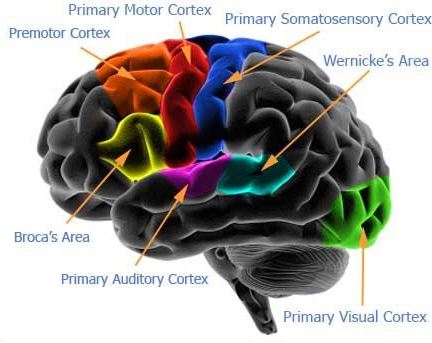Basic Cognitive Neuroscience Diseases
Cognitive neuroscience is the study of the neurobiological substrates which is responsible for human cognition and seeks to reveal the neural circuits hidden in the human mental processes. This included learning, perception about things and events, and attention. The focus of the cognitive neuroscience researchers understands the brain mechanism responsible for auditory functions, musical processing and emotional exhibitions (Mataró, 2017).
Cognitive neuroscience also seeks to understand the neural mechanisms that enable predictive processes and the effects they might have on perception. It also sees to how the predictions that were formulated can influence the understanding of our environment. It is also included in this study, the calculation strategies used in solving arithmetical problems, and the level of difficulties that mathematics enthusiasts face when engaged in numerical analysis.
Neuropsychology is a clinical application of findings in the field of neuroscience. It seeks to know how brain disorders or brain injuries can cause a defect in cognitive functions and human behavior. Another area in neuroscience is the analysis which happened to cognitive ability resulting from aging and deteriorative illness, and also the mechanism used in brain reorganization following a fatal brain injury (Mataró, 2017). It studies how cognitive function can be improved in patients who have slight cognitive deficiency through the use of non-invasive stimulated techniques. Part of the neuro-scientific studies is finding out the effects of cerebrovascular diseases and that of the neuroprotective interventions in neurobiological mechanisms such as cognitive training and physical exercises.
Other research areas have their focus on the differentiating factors in central nervous system functioning of people with normal weight and obese (overweight), as well as the coexistence of severe mental disorders and substance use disorders. It also does the analysis of learning disorders such as nonverbal learning disability and dyslexia.
Some of the techniques used by neuroscientists include genetic studies, cognitive test, and neuro-imaging techniques likes of magnetic resonance imaging.
Neuro-imaging is conceived as techniques which are used in producing brain images without necessarily performing surgery on patients with brain damages or problems, nor cutting of the skin, or any form of contact with the endo-body (Jnguyen, 2012).
Neuro-imaging techniques give doctors and neuroscientists the clear view of activities and problems occurring in the brain without carrying out brain surgery on the patient (Demitri, 2016). There are more than five safe neuro-imaging techniques used in medical facilities throughout the world, but three are most common. These techniques include; functional Magnetic Resonance Imaging (fMRI), Computerized Tomography (CT), and Positron Emission Tomography (PET) (Jnguyen, 2012). Others include electroencephalography (EEG), Magnetoencephalography (MEG), and Near Infrared Spectroscopy (NIRS) (Demitri, 2016).
Functional Magnetic Resonance Imaging (fMRI)
Functional magnetic resonance imaging is a technique of measuring the activities of the brain, through the analysis of how blood is flowing in the brain. An MRI scanner detects changes in blood oxygenation and flow that occurs as a result of neural activity. This is because, when the brain is at work, it uses more oxygen at the active area. (Demitri, 2016).
A functioning MRI scanner uses a strong electromagnet which helps to generate forms strong magnetic field within the scanner. It causes randomly spinning protons in the brain which align with the direction of the field. Also, the proton will continue to spin while they are in alignment and exhibits a wobbling top behavior. The frequency of their wobbling is referred to as resonance.
The protons, when placed in a strong magnetic field and energy, is delivered to them at a particular resonant frequency, they will absorb energy with a great efficiency. In MRI, radio waves are used to provide the force needed to make the protons move (Jnguyen, 2012).
The benefits of using fMRI include the fact that it does not involve radioactivity, and there have been no reports of side effects resulting from the use of magnetic field and radio waves. Also, fMRI is not expensive, non-invasive, and readily available and provide a wide range of excellent temporal and partial resolution.
Computerized Tomography (CT)
Computerized tomography is a neuroimaging technique that makes use of x-rays in generating pictures of the inside of the body. It gives a picture of the human brain in accordance with the differential absorption of x-rays. It has been used widely in medical diagnosis to plan, guide and monitor brain therapy.
A computerized tomography makes use of X-rays placed at different angles to produce images of the human brain.
When conducting computerized tomography scans, a movable x-ray source will be rotated around the subject’s head. Detectors are put in place to record the intensity of the rays that are transmitted while the computer simultaneously combines the snapshots taken by the movable x-ray machine and arrange them to form a 3D cross-sectional image. This can be used by the doctors and researcher to get more information about the brain (Jnguyen, 2012).

Advantageously, computerized tomography scan is painless, cost effective and fast in usage. It can provide images of bones, tissues and blood vessels simultaneously. However, the patient is exposed to the risk of cancer as result of exposure to radiation from the x-ray scanner.
Positron Emission Tomography (PET)
Positron Emission Tomography uses tracers or radioactivity labeled molecules in the blood stream which have been taken up by active neurons. When these materials become decay as a result of radioactivity, a positron will be emitted; this can be picked up by the detector. PET studies the flow of blood through the brain and the metabolic activities of the brain which helps to picture changes in biochemical processes of the brain (Demitri, 2016). PET is however used to indicate whether the brain is functioning properly.
The trace is a substance like glucose which can be broken down into the activities of cells in the body, where it is labeled with a radioactive isotope. The risk involved is very low because the amount of radiation is low and the isotope can be easily removed from the body by urination.
When the tracer is introduced into the bloodstream, the isotope will start to decay which makes it less radioactive later. During this process, a positron is released, and when it collides with an electron, it will produce gamma ray as a result of the positron and electron eliminating one another. The two produced gamma rays will travel in opposite directions and they will try to leave the patient’s body. These rays can then be detected by two detectors set at 1800 from each other, and it is recorded as a coincidence event. The computer will then determine the source of the gamma rays in the subject’s brain and then generate a 3D image.
As an added advantage, PET can detect other diseases in the body system which often occurs before one can observe the changes in the anatomy. Also, the movement of the subject does not affect the quality of the output, although the image may not be very clear in some cases. Also, the use of radiation can be injurious to the subject’s health.
These are some of the popular techniques used by neuroscientists in neuroimaging, all of them have their own advantage and their disadvantages. However, they are used in the treatment of neuro-diseases such as Alzheimer, Dementia, and Parkinson.
Alzheimer’s disease
Alzheimer’s disease has been found to be a generic cause of dementia, and it has been confirmed to be responsible for about 50% of identified dementia cases. This is because a loss of memory is the symptom that is mostly identified with affected patients (EssayEmpire, 2017).
Alzheimer is known to be a progressive and degenerative disease known to cause sporadic regression in the cognitive ability of an individual. It is identified by the prevalence of neuron and synapse loss. It often leads to the appearance of plaques and tangles (B-amyloid and tau aggregate) in the human brain (Bussey, 2015).
The German physician and neuropathologist, Alois Alzheimer was the first to identify the presence of plaques and tangles in the human brain. In 1907, he carried out an autopsy on a woman who died of dementia, and he discovered the occurrence of histopathologic alterations in form of neurofibrillary tangles and neuritic plaques.
Another characteristic of this disease is the change in the function of the affective domain; the patient tends to be partial in judgment and reasoning. In addition, the patient may have a defect in his language function, constructional abilities.
Dementia
Dementia is a gradual and persistent occurrence of deterioration in the cognitive function of human brain. It affects the intellectual abilities and behavioral pattern of an individual. It can affect the individual’s ability to excel in certain daily activities like housekeeping, driving, attending social functions, keeping daily sales record etc. Changes are also noticed in personality and the individual’s emotions (CNADC, 2017).
As against the widespread beliefs, dementia is not peculiar to aging, it results from diseases which affect the brain. The influence of dementia is felt on all aspects of mind and behavioral pattern, including language ability, ability to give concentrations, visual perception, temperament, memory, sound judgment ability, social interaction etc.
Dementia should however not be perceived as a single disease, it is a combination of signs and symptoms indicating multiple diseases or even injury in the brain (CNADC, 2017).
Parkinson Disease
Parkinson disease is a disorder caused by degeneration of the nervous system and affects the mostly the motor system (NINDS, 2016). It cannot be easily detected as the symptom comes very slowly as one grows in age. The first sets of signs that occur include shaking of the arms and legs, difficulty in walking and slow movement. With this is thinking and behavioral problems, depression, and anxiety are also noticed with people suffering from Parkinson disease. Also, Parkinson patients tend to suffer a lack of sleep, sensory problems and emotional problems (Sveinbjornsdottir, 2016).
The causes of Parkinson disease has been traced to both genetic and environmental factors. They are easily transferred among generations especially in families where it has been occurring. Also, when an individual is exposed to some form of pesticides or he has a brain injury, he is likely to have Parkinson disease. However, smoking tobacco or consuming coffee does not really have any effect on the likelihood of suffering from the disease (Kalia & Lang, 2015).
References
Bussey, T. (2015) Alzheimer’s Disease. Retrieved April 29, 2017, from Translational Cognitive Neuroscience Lab.
CNADC. (2017) Memory, Dementia & Alzheimer’s Disease. Retrieved April 27, 2017, from Northwestern Medicine | Northwestern University.
Demitri, M. (2016, July 17) Types of Brain Imaging Techniques. Retrieved April 28, 2017, from Psych Central.
EssayEmpire. (2017) Alzheimer’s Disease Research Paper. Retrieved April 29, 2017, from Research Paper.
Jnguyen. (2012, April 02) Neuroimaging. Retrieved April 29, 2017, from Huntington’s Outreach Project for Education.
Kalia, L., & Lang, A. (2015) Parkinson’s disease. Lancet (London, England), 896 – 912.
Mataró, M. (2017) Cognitive neuroscience and neuropsychology. Retrieved April 29, 2017, from Institut de Neurociencies.
NINDS. (2016, June 30). Parkinson’s Disease Information Page. Retrieved July 18, 2016
Sveinbjornsdottir, S. (2016) The Clinical Symptoms of Parkinson’s Disease. Journal of Neurochemistry, 318 – 324.
Other Relevant Blog Post
I hope you enjoyed reading this post on Cognitive Neuroscience Diseases. There are many other Nursing Dissertation Titles that should be of interest to marketing students and practitioners. There are many dissertation titles that relate to other aspects of marketing such as branding, corporate advertising, marketing strategy and consumerism to name a few. I would be grateful if you could share this post via Facebook and Twitter. Feel free to add your thoughts in the comments section. Thank you.

